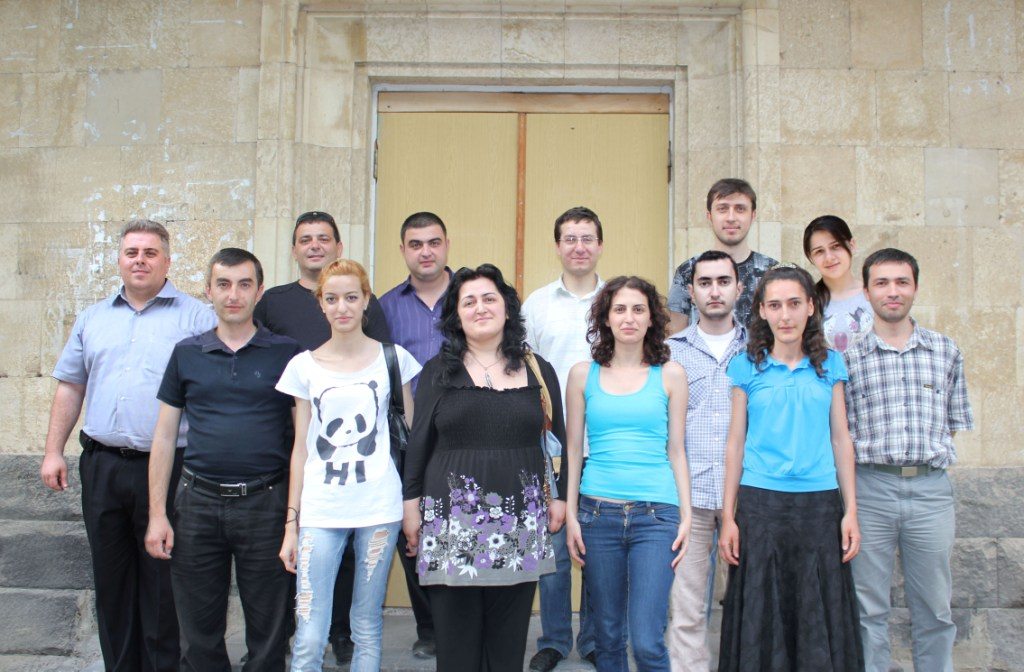The story last year about women in an Armenian border town knitting teddy bears for their families’ subsistence inspired many in the diaspora. It seemed the bears would be unstoppable—they soon made their way into Armenian-American homes, community centers, bazaars, and bookstores. Now the bears are looking to make it to television with a new mission: to teach kids in Armenia about environmental protection. And they are asking for our help.
The cast of the show are two teddy bears, Archo and Arsho. A kind creature, Archo lives in the forest with his sidekick Meghu the honeybee. Archo cares deeply about his surroundings, and works to keep it clean. One day, Archo spots Arsho performing in a traveling circus along with Titer the butterfly. And that is when their paths converge. There are other characters as well, like Gargar the trash-loving crow, and Djandj the fly.
“In Armenia, there are efforts to teach children the importance of protecting the environment, but these are not widespread. They need to be part of a larger national effort to raise awareness on environmental issues, starting with the smallest kids. This is where Archo and Arsho and their friends come in—sympathetic, snugly, friendly, and, most importantly, entertaining,” said Timothy Straight, the honorary consul of Finland and Norway, and the founder of Homeland Development Initiative Foundation (formerly Homeland Handicrafts), an organization that supports job creation in rural Armenia.
As a five-year-old, Straight remembers admonishing his father for littering. He hopes the show’s protagonist, Archo, will instill in kids a similar respect towards the environment. “These figures are going to teach the new generation of Armenians, starting from the smallest, that they personally have the power to contribute to a cleaner, healthier Armenia,” he told the Armenian Weekly. “I cannot wait to see a dad throw his plastic bottle out on the street, only to hear the kid say, ‘Dad, Archo says you are hurting the environment!’”
Straight enlisted the help of Vrej Kassouny, a popular Armenian animator and cartoonist, to create characters that were based on the Berd Bears. He wants to hit two birds with one stone: raising awareness of environmental issues and generating a steady stream of work for the women knitters in Berd, a town near the Azerbaijani border that suffers from a high level of unemployment, as most of the men have either moved to Russia or been hired as a soldier at the border.
Click here to view the embedded video.
The Berd Bears are providing fair wages to around three-dozen women in Berd. The Archo and Arsho project is the second chapter in the life of the Berd women involved in this project.
Once the show takes off, Straight hopes the demand for the stuffed teddies in the likeness of Archo, Arsho, and the whole gang will also increase.
The show will be produced in Armenia, using local talent. The first step will be to create a 9-minute pilot episode, followed by another 24.
To finance the project, the team posted the profile on Indiegogo, a crowd funding website. The decision to rely on the masses for support was partly encouraged by the Berd Bears campaign on another crowd funding site, Kickstarter, which saw $17,318 pledged by supporters worldwide.
Diasporans crave positive initiatives and stories that emerge from Armenia. That is partly why the Berd Bears did so well in the diaspora—that, coupled with Straight’s ability to realize and promote an idea, and the Berd women’s top-notch workmanship.
With the success of the Archo and Arsho show, a steady stream of teddy bear demand will only help lift up the town and keep the environment clean.
Support the Archo and Arsho show on Indiegogo,[insert link: http://www.indiegogo.com/projects/archo-and-arsho-animated-environmental-imaginitive--2], and receive one, two, or more of these characters knitted by the women of Berd. The campaign will be featured on Indiegogo until Aug. 16.
To access the Weekly’s earlier story on the Berd Bears, click here.
Berd Bears are available for purchase at the Hairenik Bookstore. To order, call 617-926-3974.


























